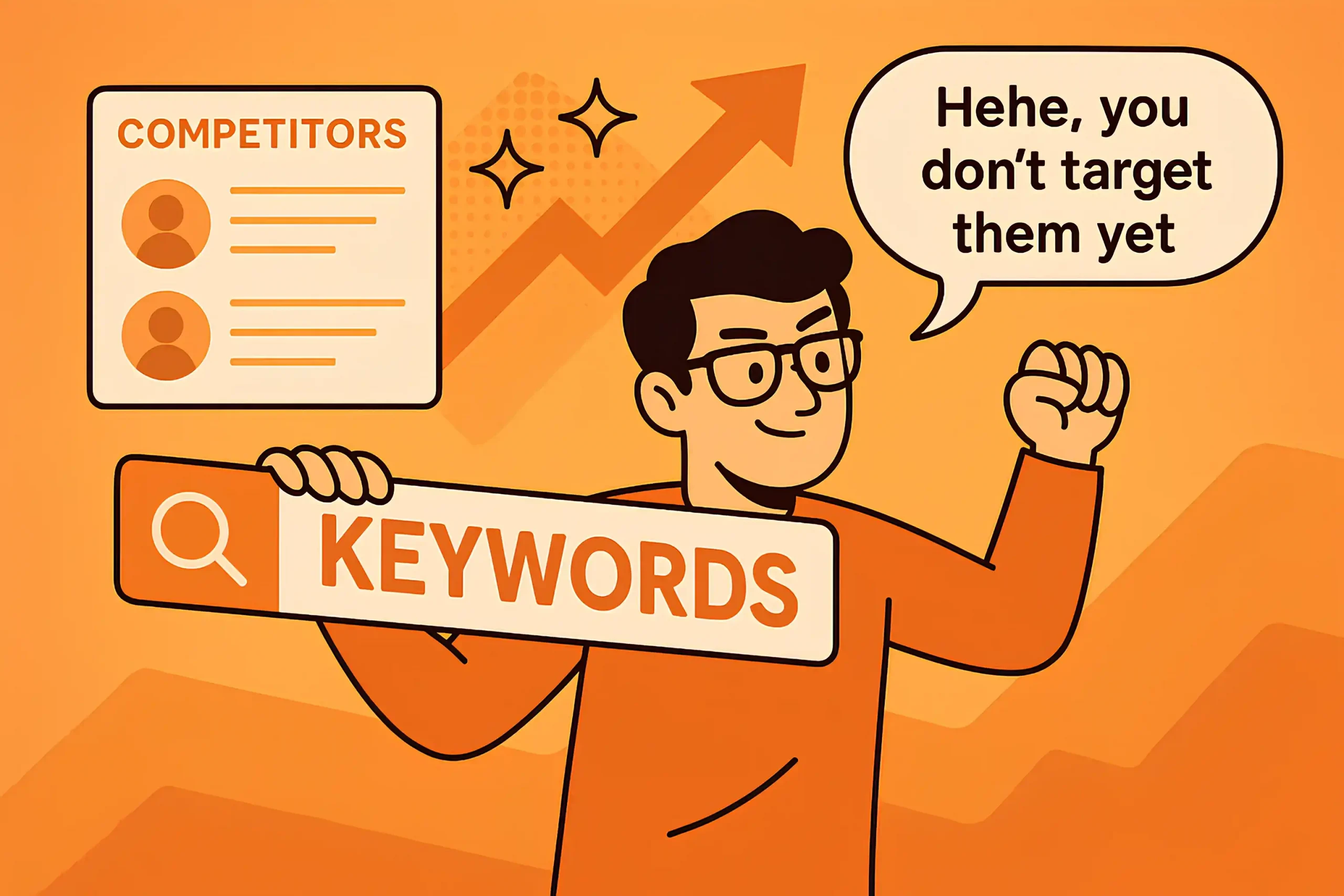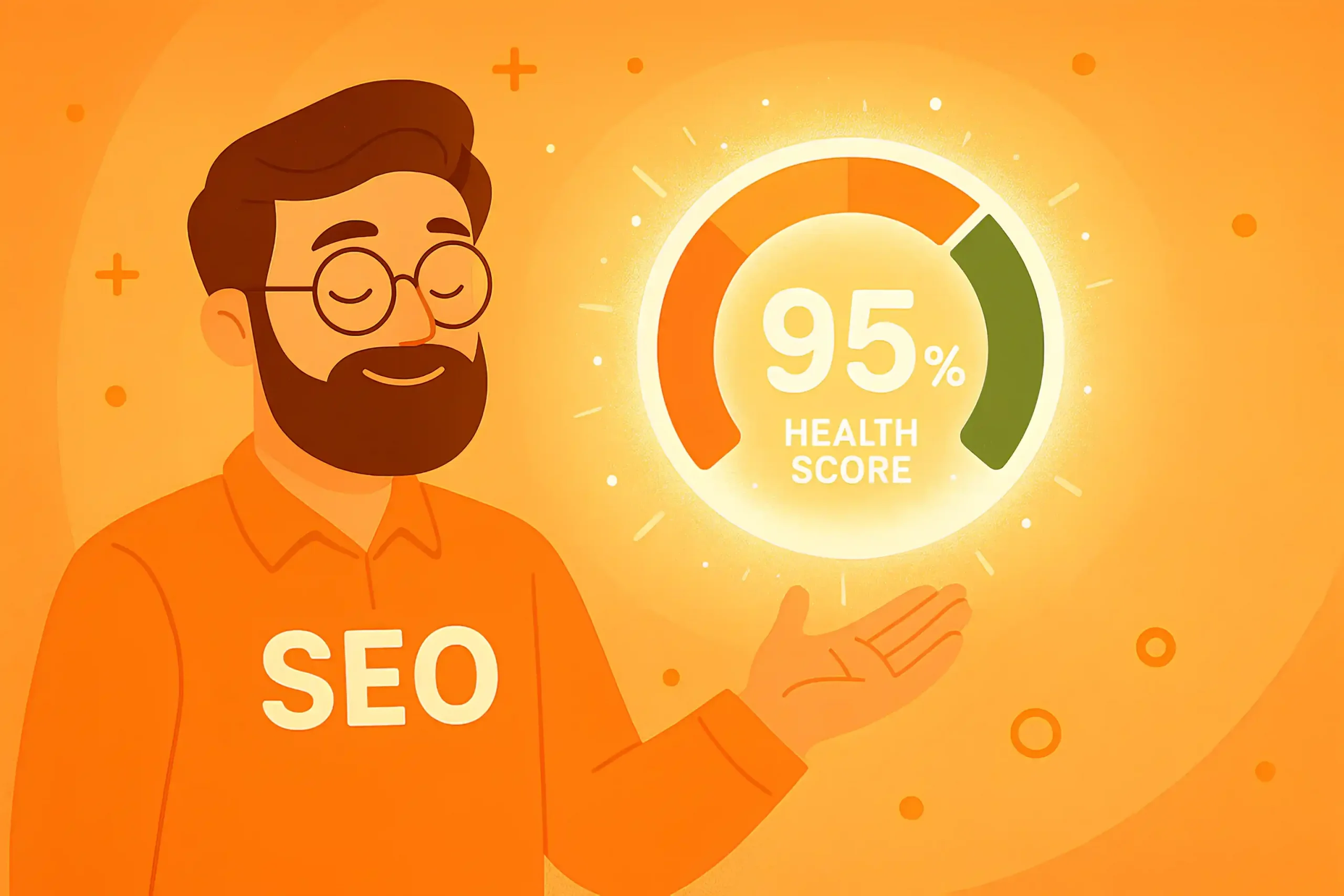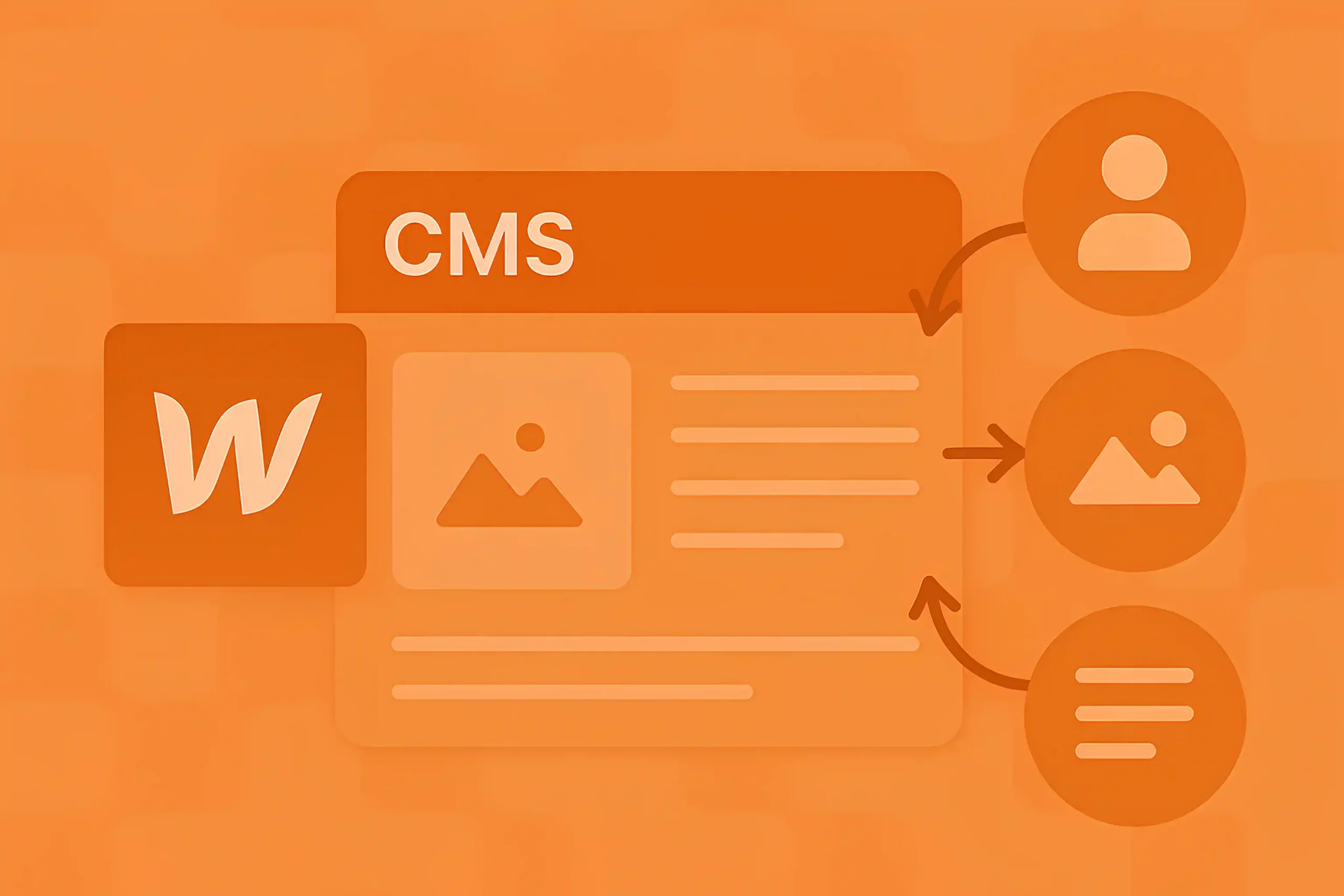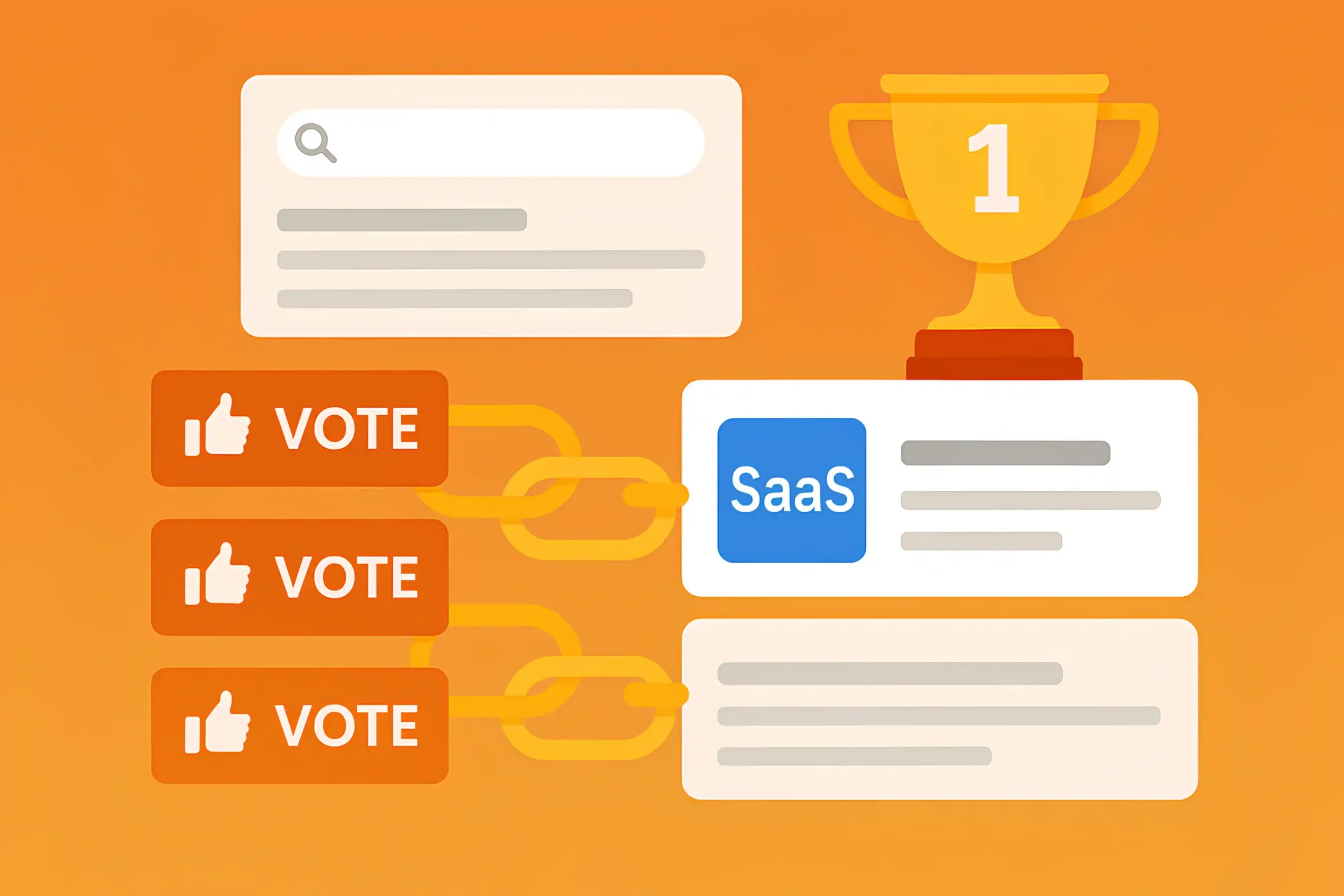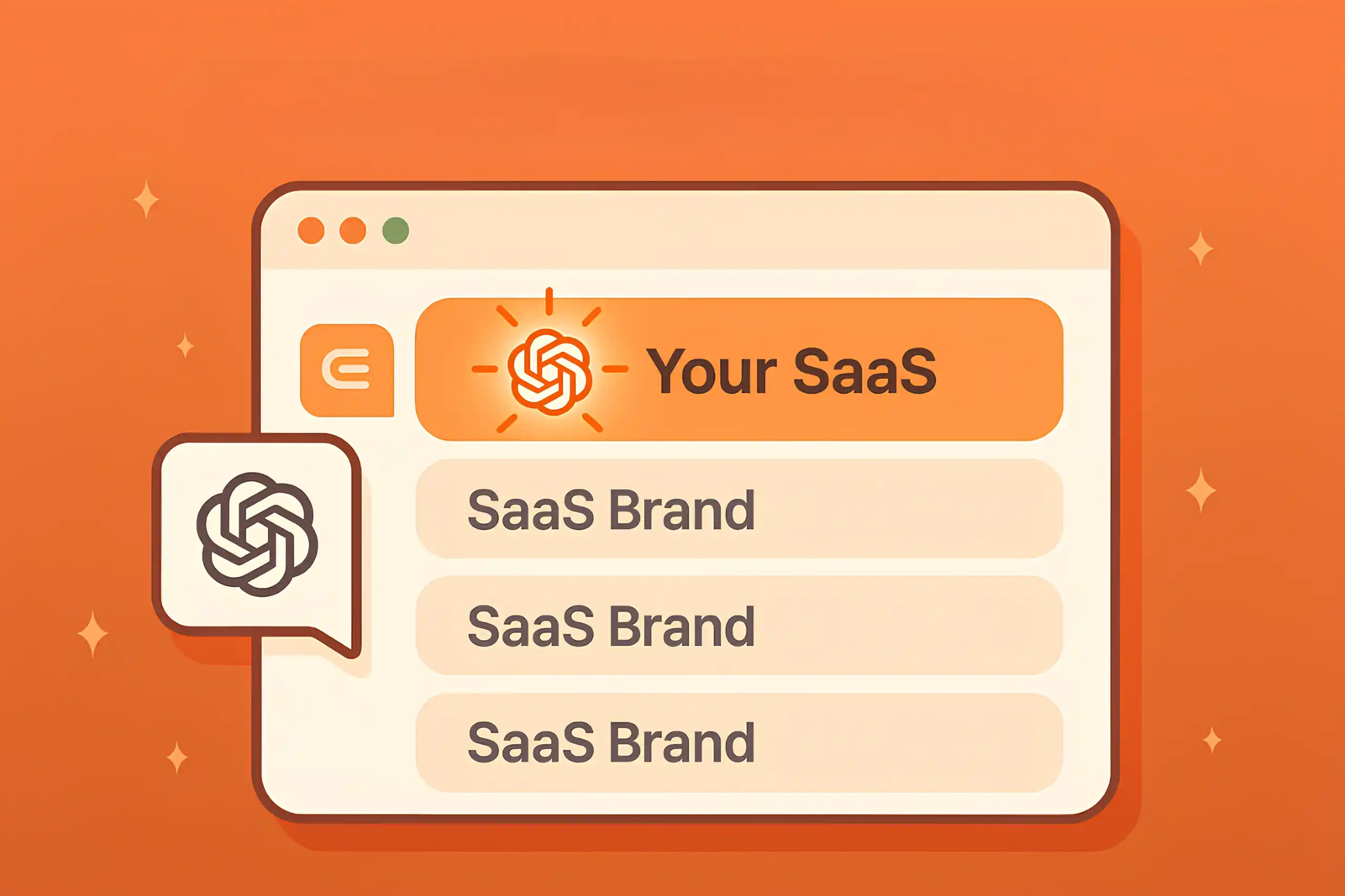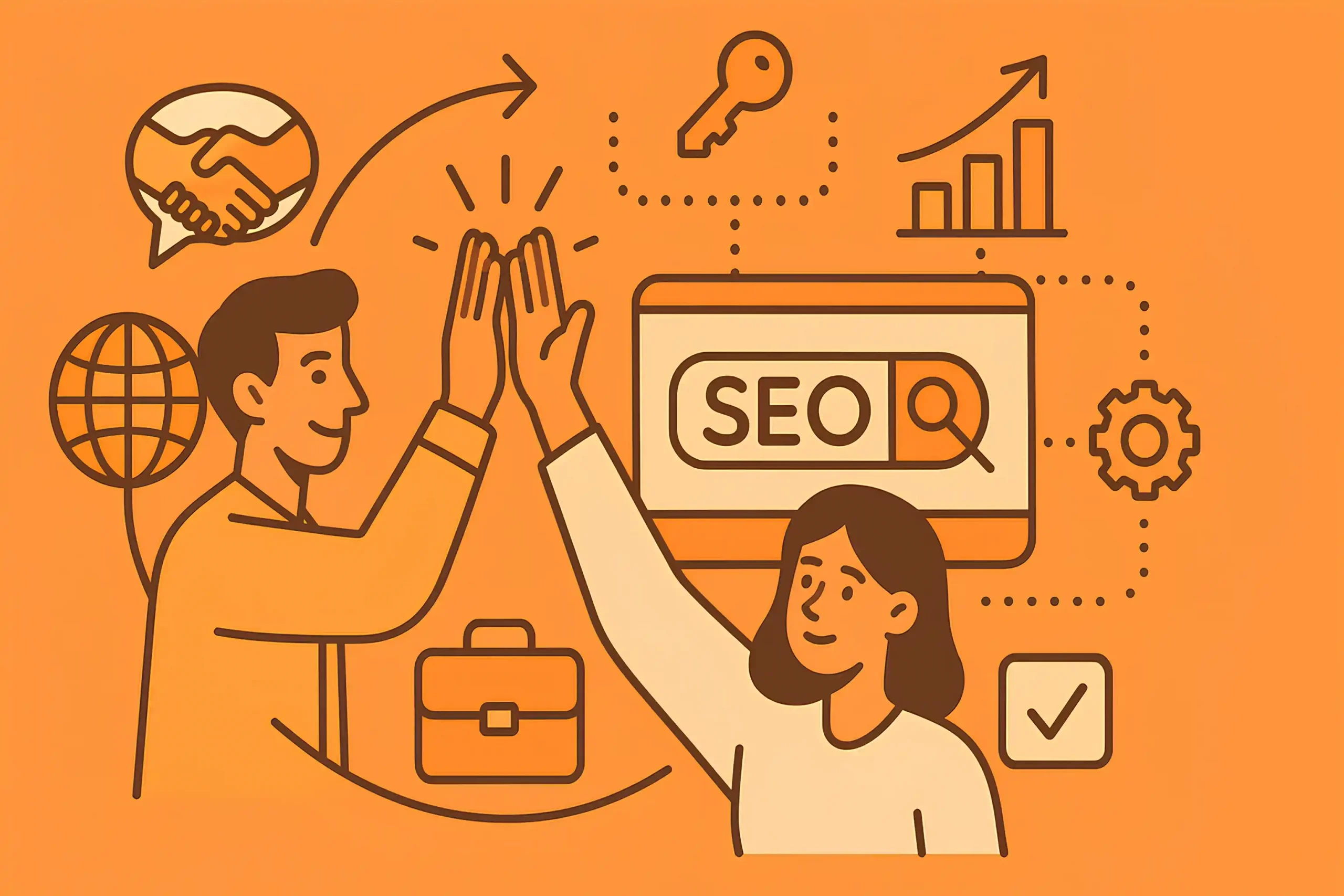Updated October 29, 2025
Enterprise SEO for SaaS: Tips & Techniques for 2025
SEO is becoming harder and harder every day, and if you apply general techniques to your enterprise SaaS, there’s almost no chance of surviving. Last year, our agency partnered with an enterprise SaaS company, and I must be honest, over 50% of our resources were dedicated to it in the first five months.
The journey was interesting, but it was also full of challenges and complications. After 11 months, we could finally achieve the results we expected (I promised to write this blog only after our efforts paid off).
I really could list out hundreds of generic strategies that others cover just to make their content lengthy, but today’s number one goal is to make sure you leave this blog with highly relevant strategies and considerations in mind.
As I love to say, life is short, let’s get straight into it.
What Enterprise SEO Means for SaaS?
Enterprise SEO, or SaaS SEO at scale, is the discipline of managing search visibility for large, complex SaaS companies. It’s about building an SEO strategy for platforms with hundreds or thousands of pages, across multiple regions, products, and user segments.
It becomes an “enterprise” when the SaaS company operates in competitive markets, has multiple teams interacting with the site, and every small SEO decision can significantly influence revenue at scale.
In simple terms, enterprise SEO for SaaS is about keeping visibility, consistency, and growth when the digital footprint is simply too big for traditional SEO tactics to handle.
Here are some clear examples of SaaS companies that typically operate at an enterprise scale, where SEO challenges are much larger than usual:
Salesforce – They have thousands of products and solution pages, global sites in multiple languages, and compete on the most competitive B2B software keywords.
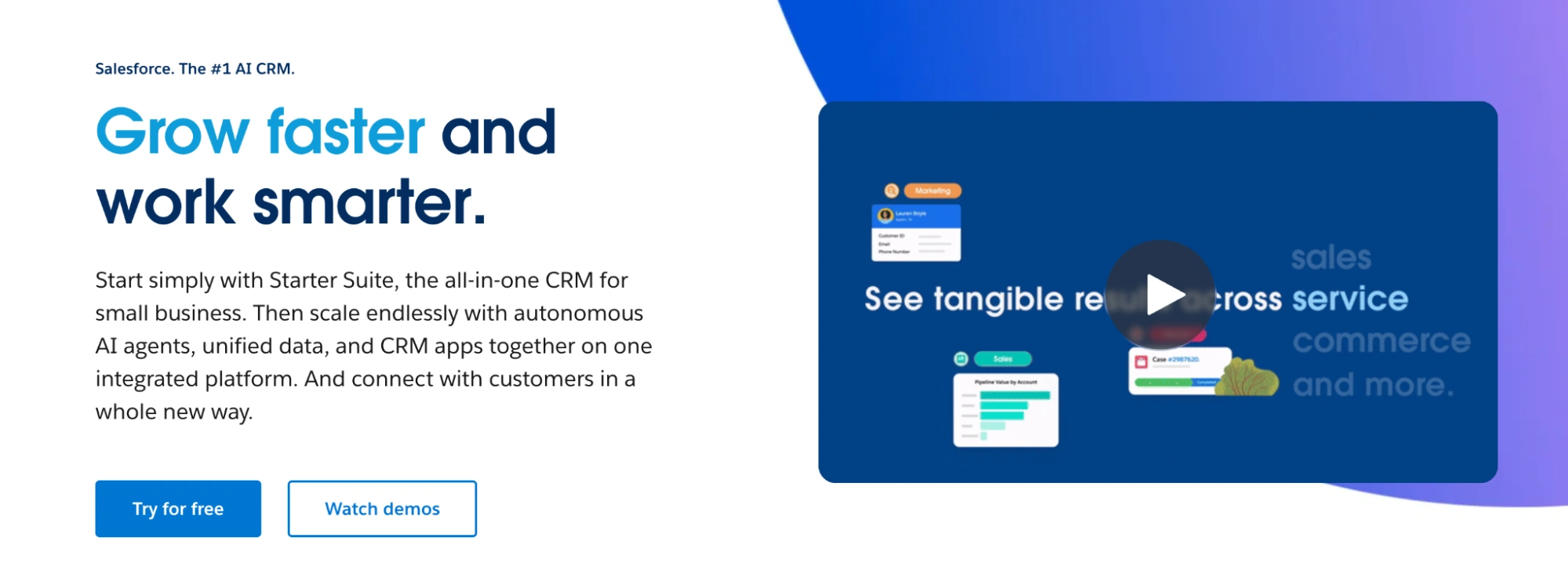
HubSpot – Their website is a mix of product pages, a massive blog, a knowledge base, and academy content, all of which need to be optimized and consistent across markets.
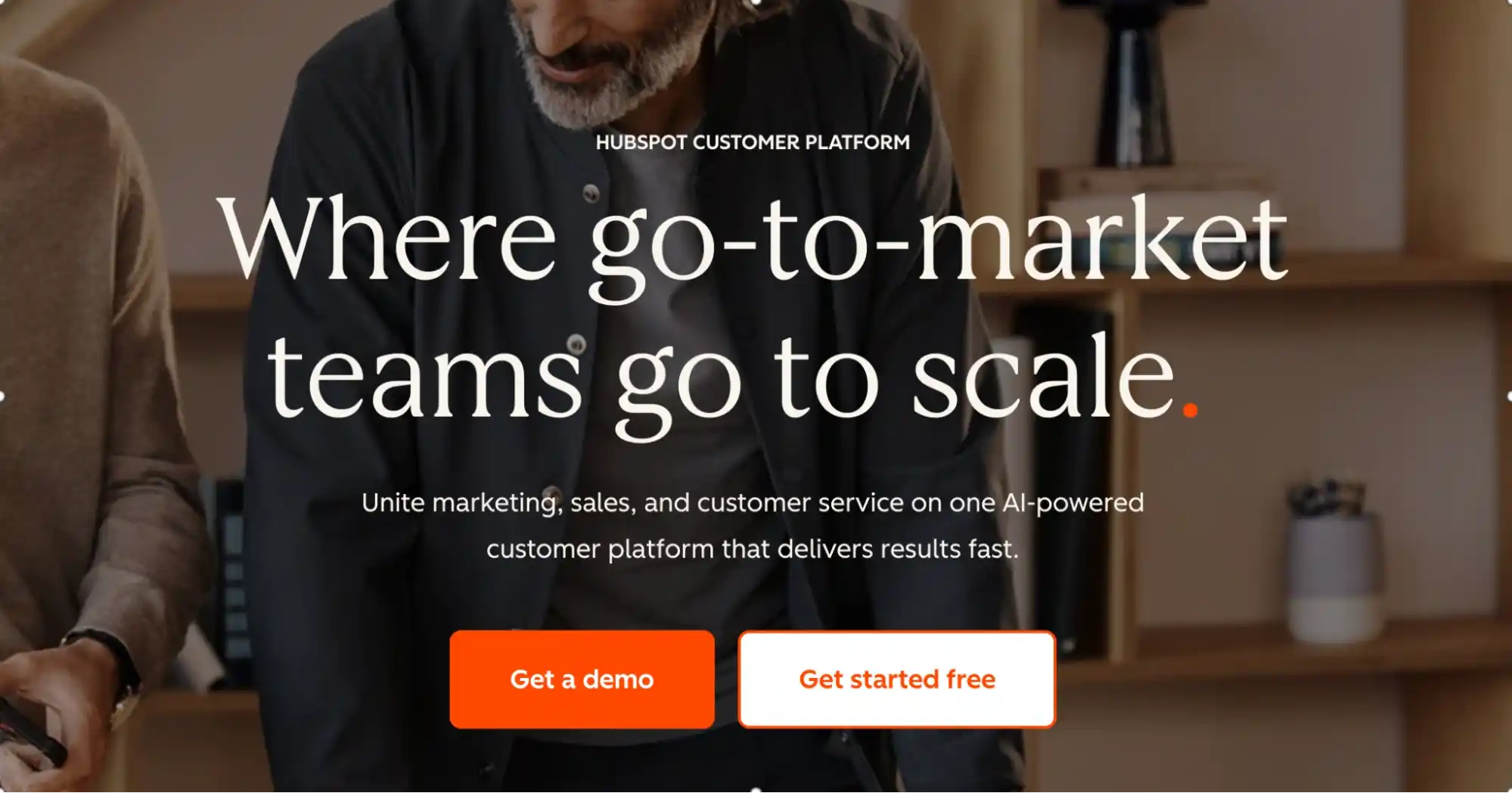
Workday – Enterprise HR and finance SaaS with complex industry pages, solution-specific landing pages, and a global presence.
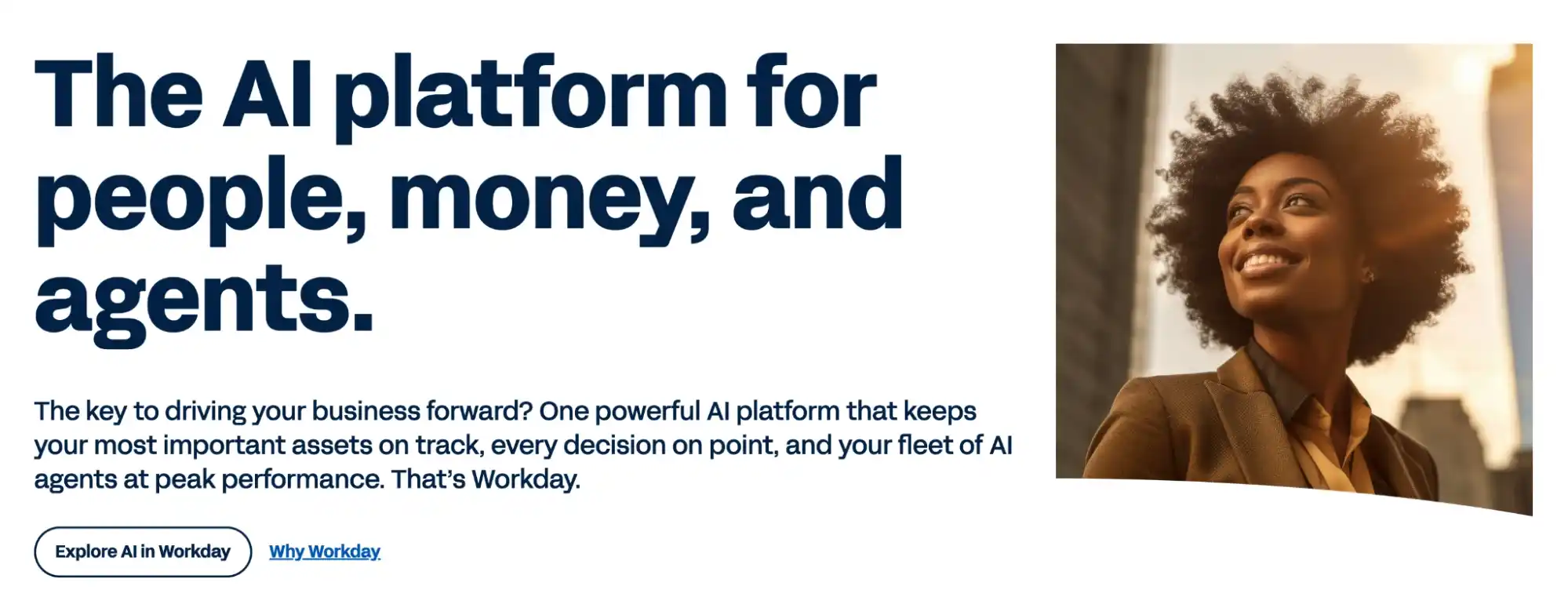
Challenges Enterprise SaaS Companies Face With SEO
There are many challenges in enterprise SaaS SEO, but today I want to separate the ones that personally took the most nerves out of me. In my entire career, I’ve only taken one enterprise-sized migration project purely for SEO purposes, and to be very honest, I will not make the same mistake twice.
It’s sleepless nights, endless back-and-forth with dev teams, unexpected blockers, and revenue on the line every single day. It’s a complete headache, and unless you’re really ready for it, it can drain every bit of patience you have.

The second big challenge I’ve faced is coordination between departments. At enterprise SaaS, you don’t just deal with one marketing manager; you’re dealing with development teams, product managers, content teams, design, legal, and sometimes even sales leadership.
The thing is that they’re often spread across different time zones. Something that should realistically take a month takes like maybe three or four months, simply because you’re waiting on approvals, sign-offs, or deliverables from teams that operate on completely different schedules.
It’s frustrating, and it tests how well you can manage expectations on both sides.
There are other common pain points as well. Budget approvals can stall even when the SEO need is obvious, because every department fights for resources. Internal politics play a role; sometimes you know the right solution, but another team has the final say, and you can’t push it through.
Then there’s the constant challenge of aligning SEO with product releases. SaaS companies ship features fast, and if SEO isn’t looped in early, you’re left cleaning up after launches rather than optimizing them in the first place.
8 Enterprise SaaS SEO Techniques for 2025
If there’s one thing I’ve learned from working with SaaS at the enterprise level, it’s that the usual “SEO checklists” don’t get you very far. Ranking a couple of blog posts or writing a few meta tags might work for smaller players, but when you’re competing against companies with global reputations and thousands of indexed pages, you need a different playbook.
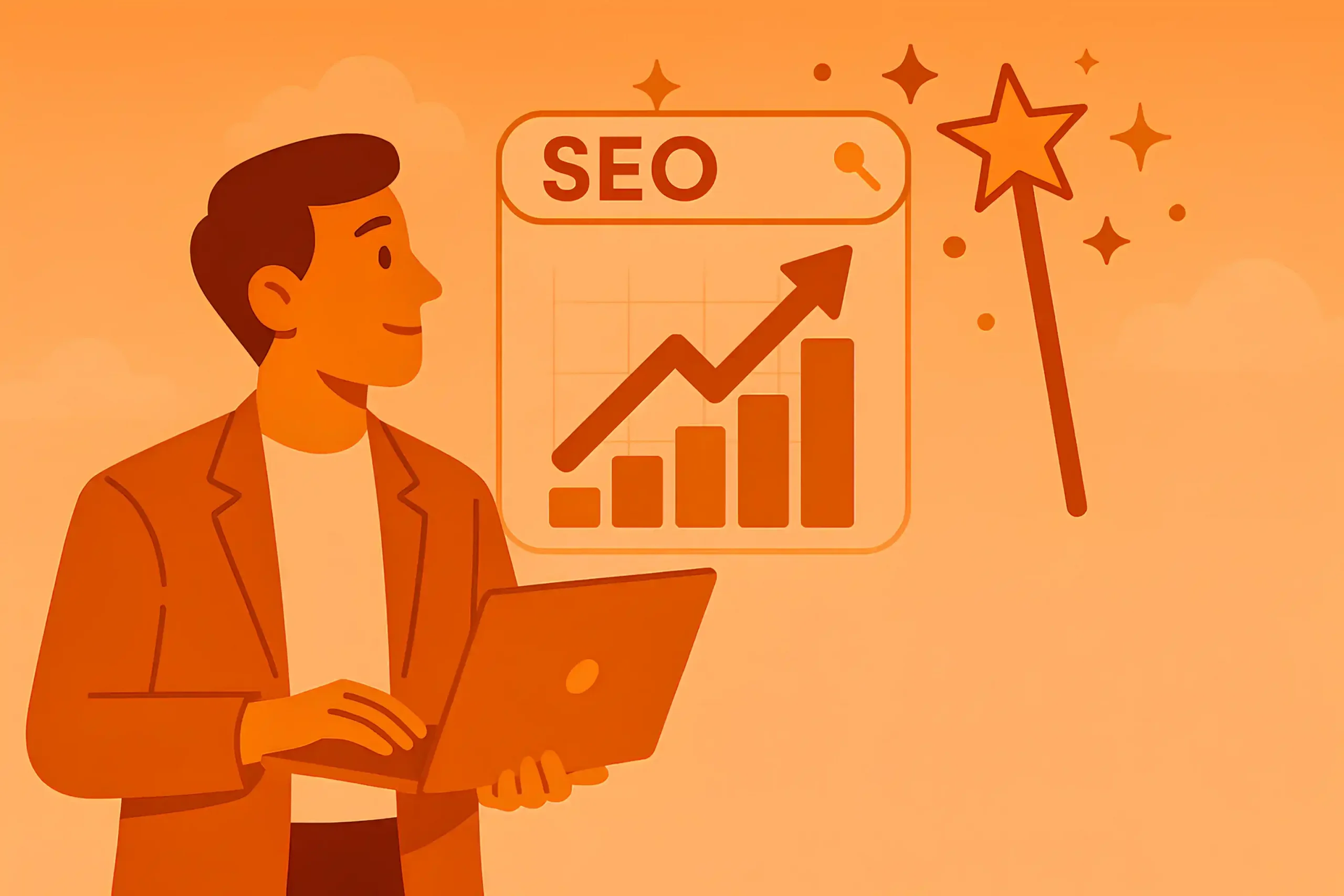
Enterprise SaaS SEO is about scale, accuracy, and long-term consistency. In this section, I want to break down 10 proven techniques that I know can make a measurable difference, because they’re the ones that worked in practice (At least for Digital World Institute)
1. Set Clear Goals Beyond Traffic (Pipeline, MQLs, SQLs)
There’s one mistake I promised myself I wouldn’t repeat (Since 2019), and it’s setting traffic as the main SEO goal. I know how dangerous that is, especially in enterprise SaaS. You can double traffic, and it still doesn’t mean a thing if the pipeline doesn’t grow.
I remember working on a project where we were hitting traffic targets every quarter, but when we looked deeper, the leads were weak, and sales didn’t care.
The only way to avoid it is to define goals that connect to the funnel. In SaaS, that means MQLs, SQLs, and pipeline contribution. Every serious SaaS SEO agency should talk to you in those terms. If the agency you’re interviewing tells you their job is “to grow organic traffic,” I’ll be honest, that’s a huge red flag.
For me, the turning point was learning to map SEO not to visits, but to sign-ups, activations, and revenue impact. That’s the only language executives listen to.
To make it practical, I’ll put together a table of what I consider the most important enterprise SaaS SEO goals beyond traffic.
| Goal | Primary KPI | Target (Example) | Key Initiatives |
|---|---|---|---|
| Grow non-branded pipeline | Demo/SQLs from organic | +35% in 2 quarters | Comparison/alternatives pages, product-led how-tos, ROl pages |
| Dominate core category terms | Top-3 share of voice | >60% SoV for 20 head terms | Pillars + clusters, internal links, expert refresh cadence |
| Win high-intent BOFU | Conversion rate on BOFU | 3.5%→6% | Pricing, ROI calculators, case studies, integration pages |
| International expansion | Clicks/leads by locale | 5 new locales live; +25% leads | Hreflang, localized copy, country SERP research, local links |
| Increase qualified visibility | Non-brand CTR & rank | CTR +2 pts; avg pos <4 | Title/H1 rewrites, snippet targeting, schema (FAQ/HowTo) |
| Measure what matters | Pipeline attribution | ≥70% accurate assist tracking | GA4/CRM alignment, UTMs, model validation |
2. Keyword Research for Enterprise SaaS
Whether you’re running SEO campaigns for B2B SaaS or a true enterprise company, the keyword logic changes completely. With smaller SaaS, you can often get away with targeting broad “how-to” terms or industry blog topics.
But once you step into enterprise, the focus shifts to depth, intent, and scale. By the way, I already put together a very detailed guide on how to do keyword research for SaaS in general, but enterprise requires another level of thinking.
Here’s what I mean. At the enterprise level, you’re not just looking for “CRM software” or “best project management tool.” You need to uncover queries that match how buyers make six-figure decisions.
That often means comparison keywords like “Salesforce vs HubSpot,” integration-based keywords like “Slack Jira integration,” or feature-level searches like “AI-powered analytics for HR software.”
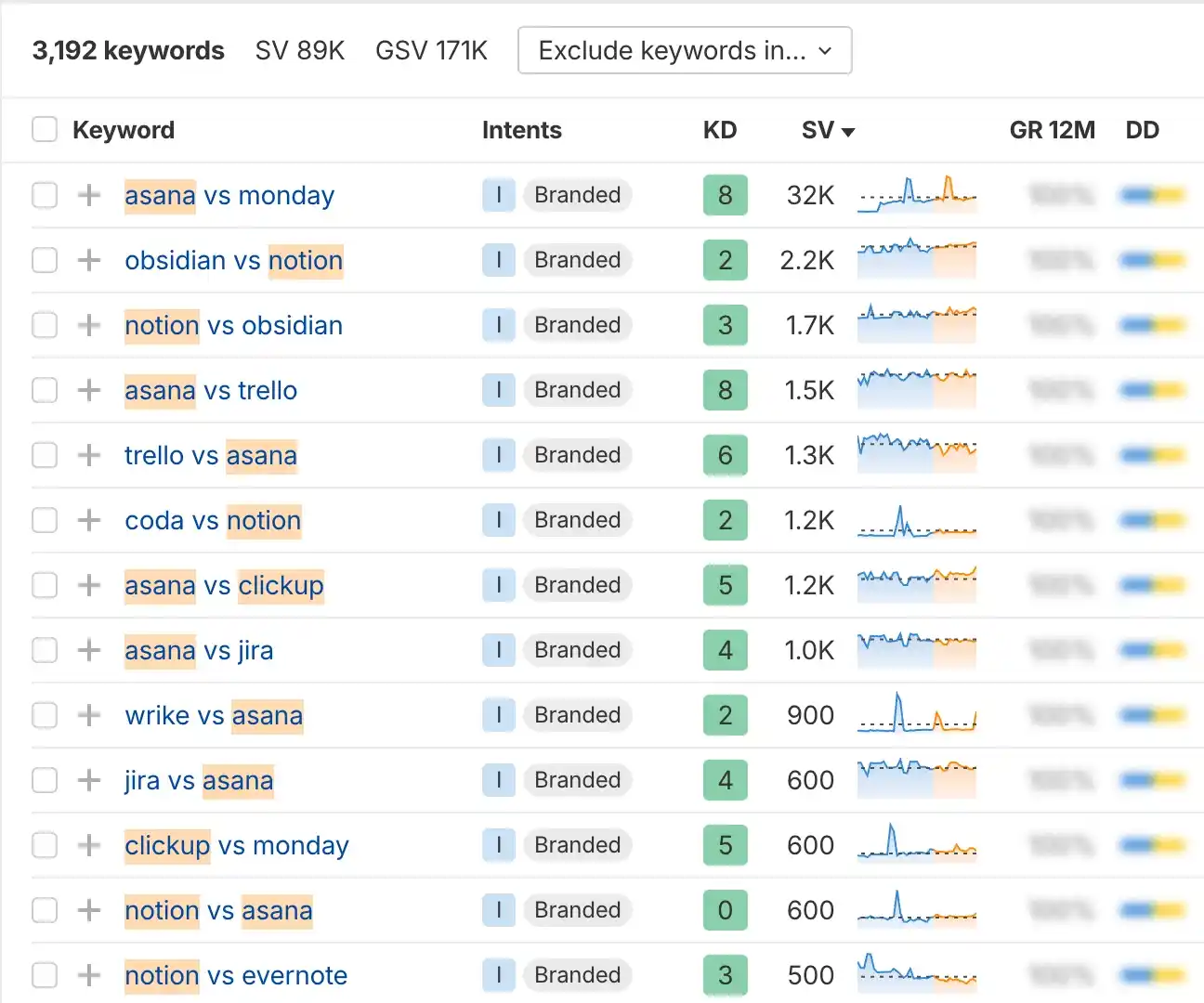
These are the terms that signal not just interest, but serious purchase intent.
The challenge is that the scale is massive. Enterprise SaaS companies might have hundreds of features, industries, or integrations, and each one opens up a keyword universe.
Next, I apply one of my favorite filters that lets me filter keywords where at least one of the top-ranking pages has a DR (Domain Rating) below your chosen value.
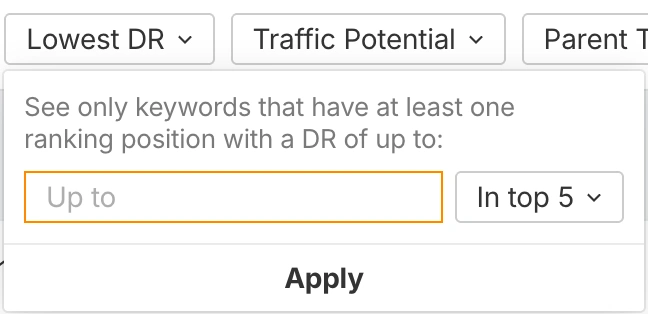
In such cases, our enterprise SEO agency prefers to approach it programmatically, building keyword frameworks like “{Product Feature} + for {Industry}” or “{Software} + integration with {Tool}.” That way, we’re creating scalable systems that capture intent across entire categories.
In terms of tools, as you might have noticed, I always start with Ahrefs or AnswerThePublic for the big picture, but the real gold comes from places like G2, Capterra, and even support tickets. These show the exact language prospects use when they’re evaluating software.
For example, if I see that “ERP for construction companies” has a consistent search footprint, I know there’s an opportunity to build a feature page and supporting content around that (Even if traditional SEO tools show “ n/a ”.
If you need to scale keyword research but don’t want to handle all the heavy lifting in-house, you can always outsource keyword research services to a team that specializes in SaaS.
3. Prioritize Log File Analysis at Scale
Log file analysis might sound overly technical, but in reality, it’s simple: it’s the process of looking at the raw server logs to see how search engines crawl your site. You can see which pages Googlebot visits, how often it comes back, and which areas of your site it completely ignores.
For enterprise SaaS companies, it’s very important. When you’re running a platform with tens of thousands of URLs: product pages, knowledge base articles, integration hubs, partner directories, you don’t want Google wasting its crawl budget on dead ends.
For example, last year, when I started working with an enterprise SaaS company, I dug into their crawl budget on GSC and found that most of it was being wasted on JavaScript and resource-heavy pages.
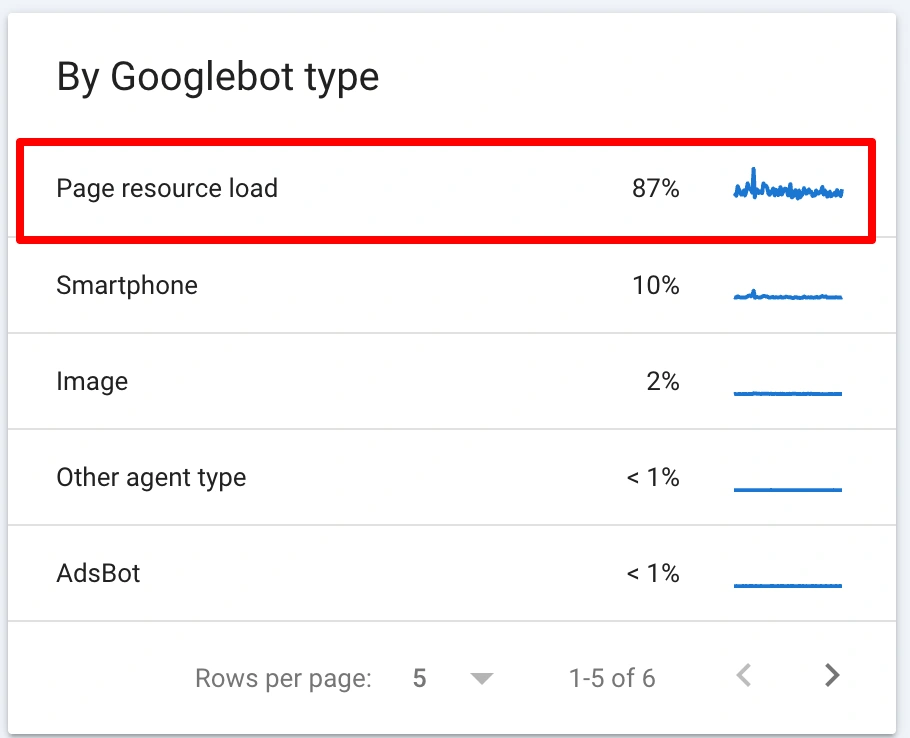
That was actually the number one reason their site kept de-indexing. Next, we ran log file analysis and made sure there are no other issues that block crawlers.
Once we fixed the crawl distribution by blocking unnecessary resources and prioritizing product templates, indexation recovered, and visibility improved within weeks.
It was one of those moments where you realize log data doesn’t just confirm suspicions; it shows you exactly where the fire is burning.
You don’t need to reinvent the wheel. Screaming Frog Log File Analyzer, Botify, OnCrawl, and even SiteBulb can do the job.
For me, log analysis has moved from being a “nice-to-have” to a non-negotiable in enterprise SaaS. It’s the only way to see how search engines interact with your site at scale, and it saves you from finding out six months later that your most valuable pages were invisible all along.
If you want a deep dive into technical SEO for SaaS, I’ve also created another guide that walks through everything step by step.
4. Build a Scalable Internal Linking Strategy by Vertical
Internal linking is one of those things that sounds easy until you try to do it at enterprise scale. When you have thousands of pages, especially for programmatic SEO for SaaS campaigns, it’s almost impossible to sit there and manually insert links one by one.
That’s why in these cases I usually try to find dynamic solutions. Even if you can’t always insert perfect, editorial-style, exact-match anchor text, the overall user flow and link equity still get distributed.
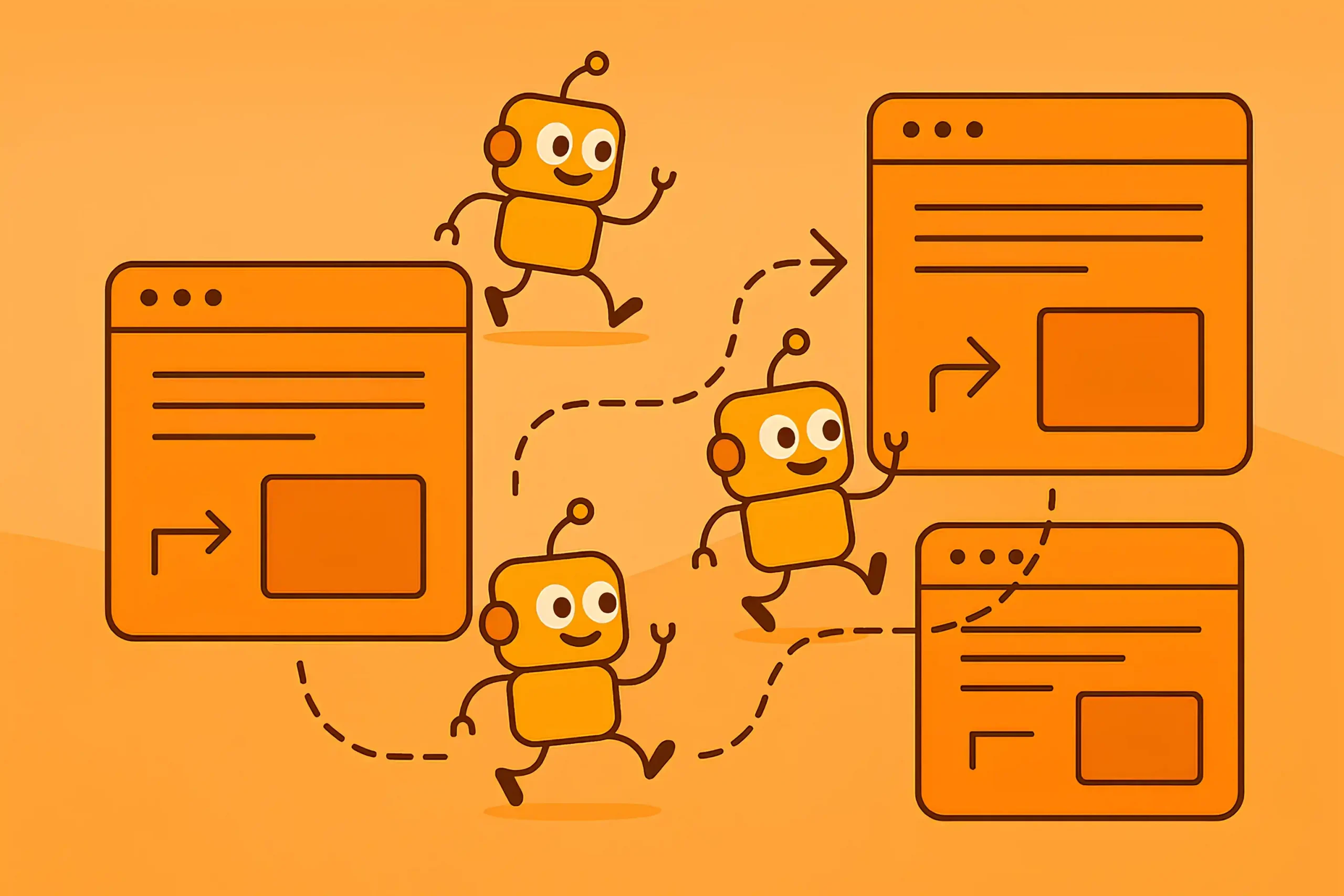
Here’s what that looks like in practice. Let’s say you’re running dozens of feature pages. Instead of manually linking each one, you can set up a system that automatically suggests related features or integrations at the bottom of the page.
With blog posts, you can use CMS tagging logic to suggest related posts in the same vertical, almost like a “recommended reading” section.
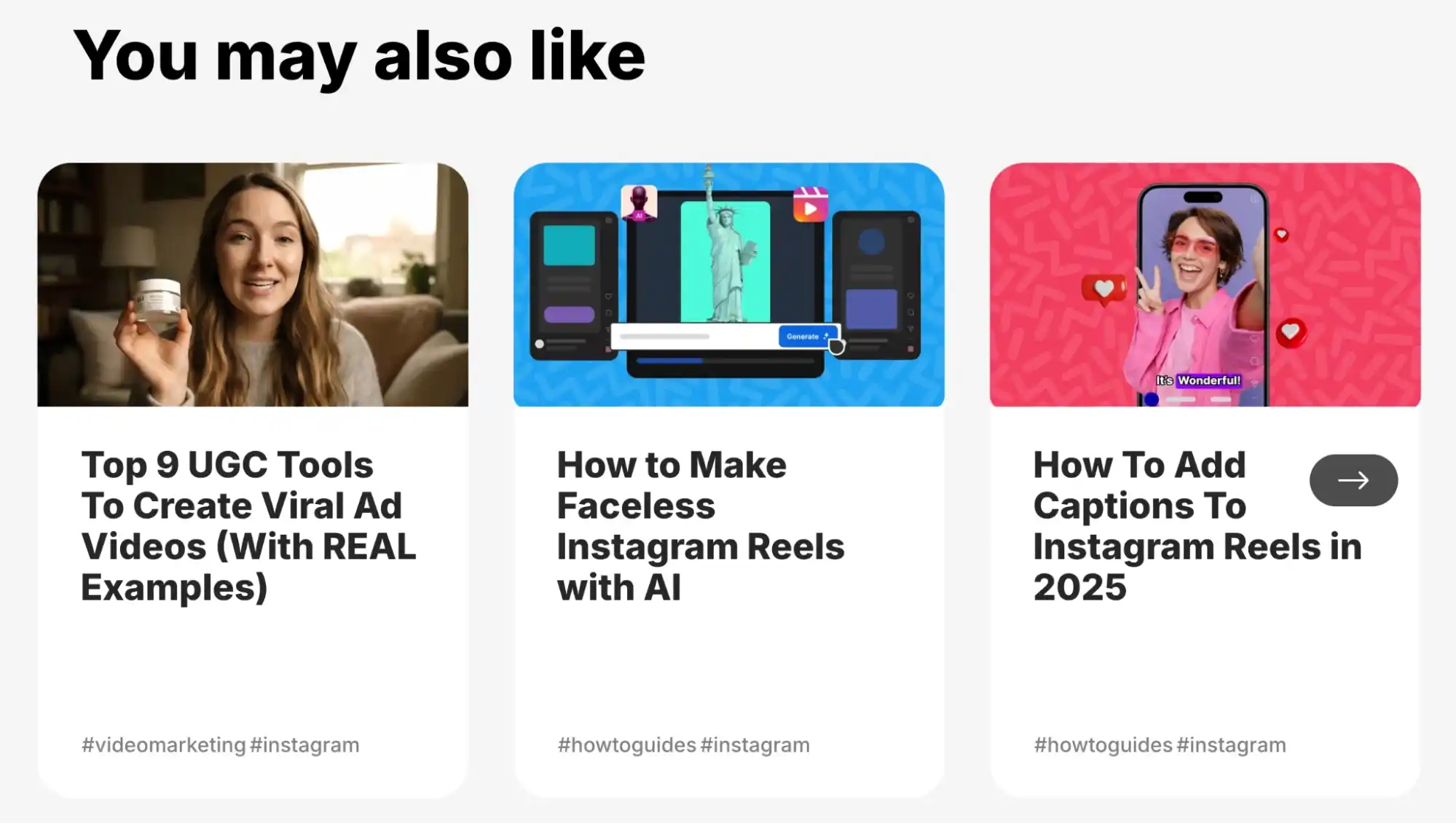
This way, the clusters start to form naturally, and link authority flows across the whole vertical without anyone manually targeting anchors.
The beauty of this approach is that it creates siloed authority around each vertical: features, industries, integrations, without extra resources.
It also improves the user journey, because visitors naturally explore deeper into content that’s relevant to them.
5. Localize Enterprise SEO the Right Way
I’ll be honest: I don’t like international SEO. At our SEO agency, we usually avoid it for non-SaaS projects. But with SaaS, you want it or not, sometimes it’s mandatory. Demand lives in multiple languages, and if you want real growth, you have to meet buyers where they search.
For example, last year, we ran two–three international rollouts on Webflow, and in one of my SaaS SEO case studies, I explain how we hit every possible wall.
Webflow’s native “locale” translator looks convenient on the surface, but right now, it creates more problems than it solves.
If you want to learn more about how you can optimize your Webflow SEO for SaaS, check out my full guide, where I break everything down in detail.
If you’re preparing to scale internationally, start with structure, not translation. Decide once: ccTLDs, subdomains, or subfolders. Most enterprise SaaS teams are fine with subfolders because they’re simpler to maintain and consolidate authority, but the key is consistency.
Don’t mix patterns or you’ll struggle with hreflang errors for months. Ask your developers to make sure every localized page is self-canonicalized (no canonicals pointing back to English) and that hreflang includes correct return tags for each language/region, plus a clean x-default.
No IP-based auto-redirects. Give users a visible language switcher that links; don’t hide it behind JavaScript.
Of course, international SEO is more than hreflang. It’s language-level keyword research and content decisions, not word-for-word copies.
Operationally, treat this like a product release. Create a pre-launch checklist in the same tracker your dev team lives in. I want automated hreflang validation in CI, not a one-time manual crawl.
I want Search Console properties per locale, with alerts wired to the channel your team watches.
I want log-file monitoring turned on from day one so we can see if Google is even crawling the new locales, etc.
One more thing teams underestimate: governance. Who owns updates when product naming changes in English? If your “Workspaces” feature gets renamed, the French, Spanish, and German variants need to move in lockstep.
Create a localization workflow that starts with source-of-truth term lists, feeds a TMS (Phrase, Lokalise, whatever you use), and ends with human review before publishing.
International SEO for SaaS works when engineering, content, and ops speak the same language.
If your developers know what to build (clear URL strategy, self-canonicals, hreflang with returns, real links in the language switcher, no forced geo-redirects), and your content team knows what to localize (keywords, CTAs, screenshots, legal), you can ship clean, scalable international sites.
If not, you’ll spend months fixing avoidable mistakes and wondering why the new locales aren’t ranking.
6. Enterprise Link Acquisition for SaaS Companies
I don’t even remember when exactly I started doing link-building, but I can say for sure it has been a huge part of my SEO journey, and honestly, one of the parts I’ve always enjoyed the most.
However, for enterprise link-building, the rules change completely. The basic foundation of link acquisition is still there: authority, relevance, trust, but in enterprise SaaS, you can’t just buy a handful of backlinks, do some generic link swaps, or run a “10 links per month” type of package and expect meaningful results.
At this level, you need a custom link-building strategy that’s tightly aligned with the business model and the way your SaaS product fits into the market.
These are the top techniques for enterprise SaaS, based on our experience as a SaaS link-building agency.
In my link-building case studies, you can see that some of the most successful campaigns I’ve run weren’t about volume; they were about accuracy.
For example, creating data-led studies or industry reports that naturally attract high-authority links from media outlets and analysts, or leveraging integrations and partnerships, if your SaaS product connects with Salesforce, Slack, or HubSpot, there’s a whole world of natural link opportunities.
In enterprise SaaS, you can’t rely on just PR mentions or guest posts. You need a mix: thought leadership content that earns editorial links, integration pages that attract links from partner docs, customer success stories that get cited, and resource hubs that become linkable assets in themselves.
link building becomes less about “outreach campaigns” and more about building a permanent infrastructure for earning links.
If you want to learn more about how to approach link-building for SaaS in detail, make sure to check out my full guide, where I break down the strategies step by step.
7. Leverage AI in Enterprise SaaS SEO
Trying to survive in enterprise SaaS SEO with only traditional methods is already a mistake. The landscape is shifting fast, and if you’re not paying attention to how large language models and generative engines choose content, you’re falling behind.
Best practices still matter: technical SEO, content, links, good UX, but the companies that win over the next few years will be the ones that adapt their strategies to both search engines and AI-driven platforms.

That’s why I now think of enterprise SaaS SEO in two ways. The first option is the traditional one: optimizing product pages, building authority, and fixing technical debt.
The second technique is newer but just as important: making sure your content is discoverable and quotable by LLMs.
This includes being active on forums like Reddit, Quora, or niche communities where LLMs often pick answers from, and creating content in a format that’s easy for AI to digest and cite.
When it comes to balancing efforts, I’d put around 70% into traditional SEO foundations (because those still drive the bulk of traffic today), 20% into AI-focused optimization, and 10% into experiments.
The effects are not equal yet; traditional SEO still delivers the most predictable ROI, but ignoring the GEO (Generative Engine Optimization) now means playing catch-up later, and if you’re not sure where to start, looking into professional AI SEO services can give you a clear roadmap for aligning both strategies.
Some techniques that I believe work include:
Structuring answers in a way that’s concise and factual, so AI systems can quote them directly. Creating evergreen data-driven resources that are likely to be referenced in generative answers.
Building authority across multiple sources: blogs, forums, and even academic-style citations, to increase the chance of your brand being “trusted” by AI.
Tracking how your brand appears inside AI overviews or chat-based engines, and adjusting content around those prompts.
This is still a young space, but it’s one you can’t afford to ignore. If you want to go deeper, I’ve put together a dedicated guide on how to optimize your SaaS for LLMs, with practical examples and workflows you can test right away.
8. Use Schema Markup
I don’t treat schema as a “nice to have.” It’s how I teach Google what each template is meant to do at scale: home, product/pricing, feature, docs, blog, and integrations. For enterprise SaaS, it matters more than ever because you’re shipping fast, multiplying templates, and you can’t afford ambiguity.
I think you can start with your root entity. On the homepage, implement Organization with the exact legal name, logo, URL, sameAs profiles, contactPoint (sales/support), and any unique IDs you have.
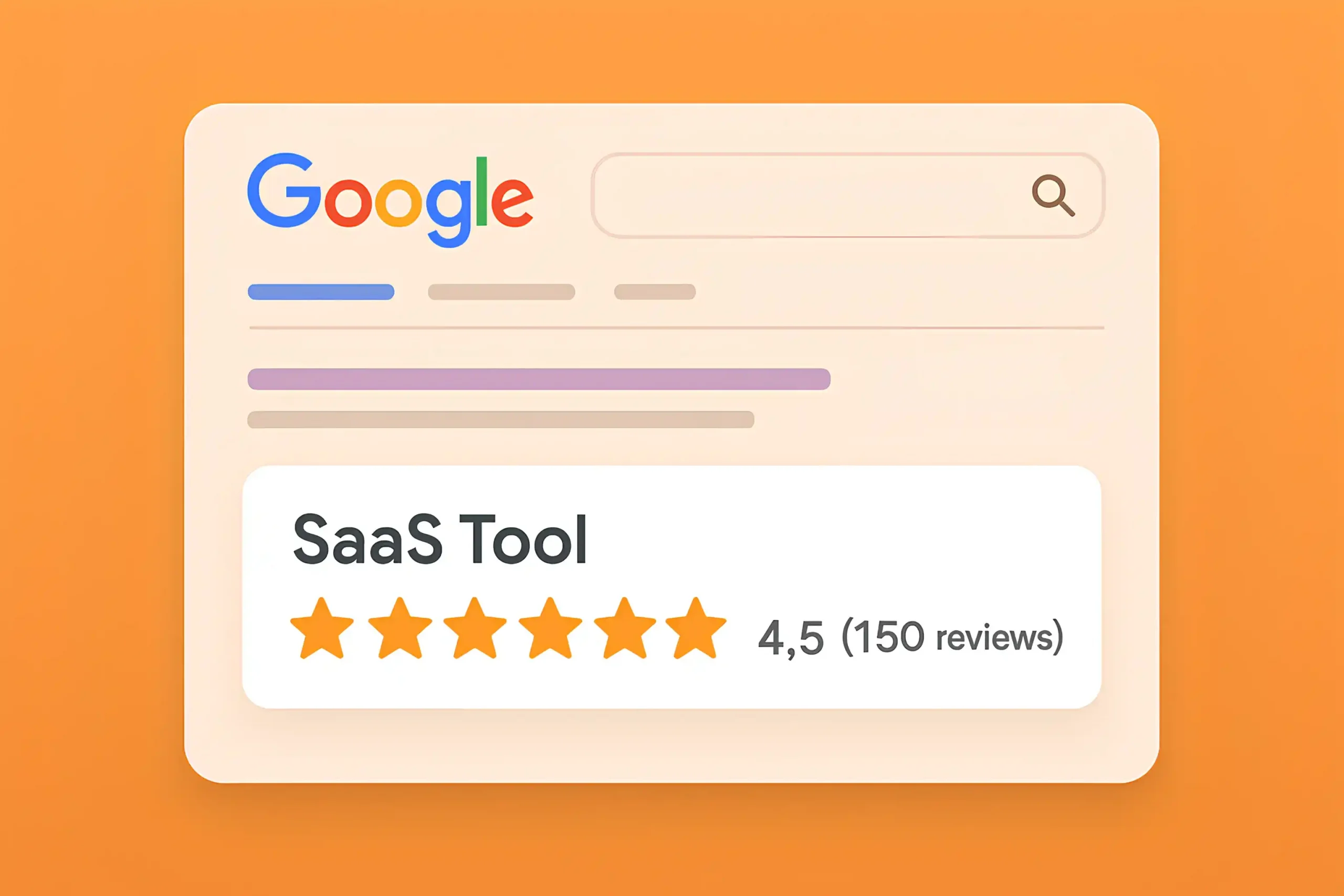
For the product you sell, don’t be shy about using Product on commercial pages (pricing, plan detail, “buy” flows). Product supports price, availability, offers, and review snippets; it’s the schema Google most directly associates with commerce.
If you price by seat or plan, represent tiers with offers or aggregateOffer, and keep values identical to what users see, no “schema-only” pricing tricks.
Next, where it makes sense, pair that with SoftwareApplication on app-oriented views (feature pages, app listings, integration hubs). Use applicationCategory (e.g., “BusinessApplication”), set operatingSystem to “Web” for browser-based SaaS, and include softwareVersion when relevant.
A few practices that save headaches at scale:
Keep all markup in JSON-LD and deploy from your component library, not one-off script blobs. When a template changes, the schema changes with it.
Google explicitly recommends JSON-LD and compliant access (no robots/noindex blocking). Validate before shipping.
Make the schema truthful to the UI. If your pricing shows “from $49,” don’t hard-code $29 in the JSON-LD. Mismatches are a common reason snippets don’t render.
Avoid duplicate or conflicting entities on the same URL. A single primary thing per page wins (this is where designating “offer page” vs “feature explainer” upfront pays off).
Treat docs/KB differently from sales pages. If docs must be indexed, use clear Article/TechArticle patterns and route internal links so they support, not cannibalize, commercial intent.
What does this earn you in practice? Cleaner entity understanding, steadier brand presentation, and higher eligibility for the rich features that still matter (Product info, review snippets where eligible, better breadcrumb interpretation).
Best SEO Tools for Enterprise SaaS Teams
Over the years, our team has tested just about every SEO tool out there, but when you’re working with enterprise SaaS, the stakes are higher and the toolset really matters.
You can’t afford to rely on generic data or tools built only for small websites. At my agency, we’ve had to be picky; we stick to the platforms that can handle scale, integrate with our workflows, and give us the type of insights you can act on.
| Tool | Primary Use | Why Enterprise Teams Like It | Best For |
|---|---|---|---|
| Sitebulb | Crawl + visualization | Clear graphs, prioritization | Stakeholder reports |
| Botify | Enterprise crawling + logs | Scales to millions of URLs | Crawl budget & JavaScript SEO |
| Oncrawl | SEO A/B testing | Stat-sig testing for SEO | Title/meta/layout experiments |
| Conductor (incl. ContentKing) | Content + real-time monitoring | Always-on change alerts | Preventing SEO regressions |
| Pitchbox | Outreach workflow | Personalization, team approvals | Digital PR at scale |
| Lumar (Deepcrawl) | Cloud crawler, governance | Change tracking, workflows | Ongoing technical hygiene |
In-House vs. Agency: What’s Better for Enterprise SaaS SEO?
I’ve lived on both sides of this question, and yeah, there’s no universal answer. It depends on the stage of the company, the resources available, and how fast you want to move.
When you build SEO in-house at an enterprise SaaS company, you gain control. You can sit in the same Slack channels as product, engineering, and design. You don’t need to wait two weeks for approvals.
If the company really invests in SEO, an in-house team can embed itself deep into the release cycle and catch issues before they even happen.
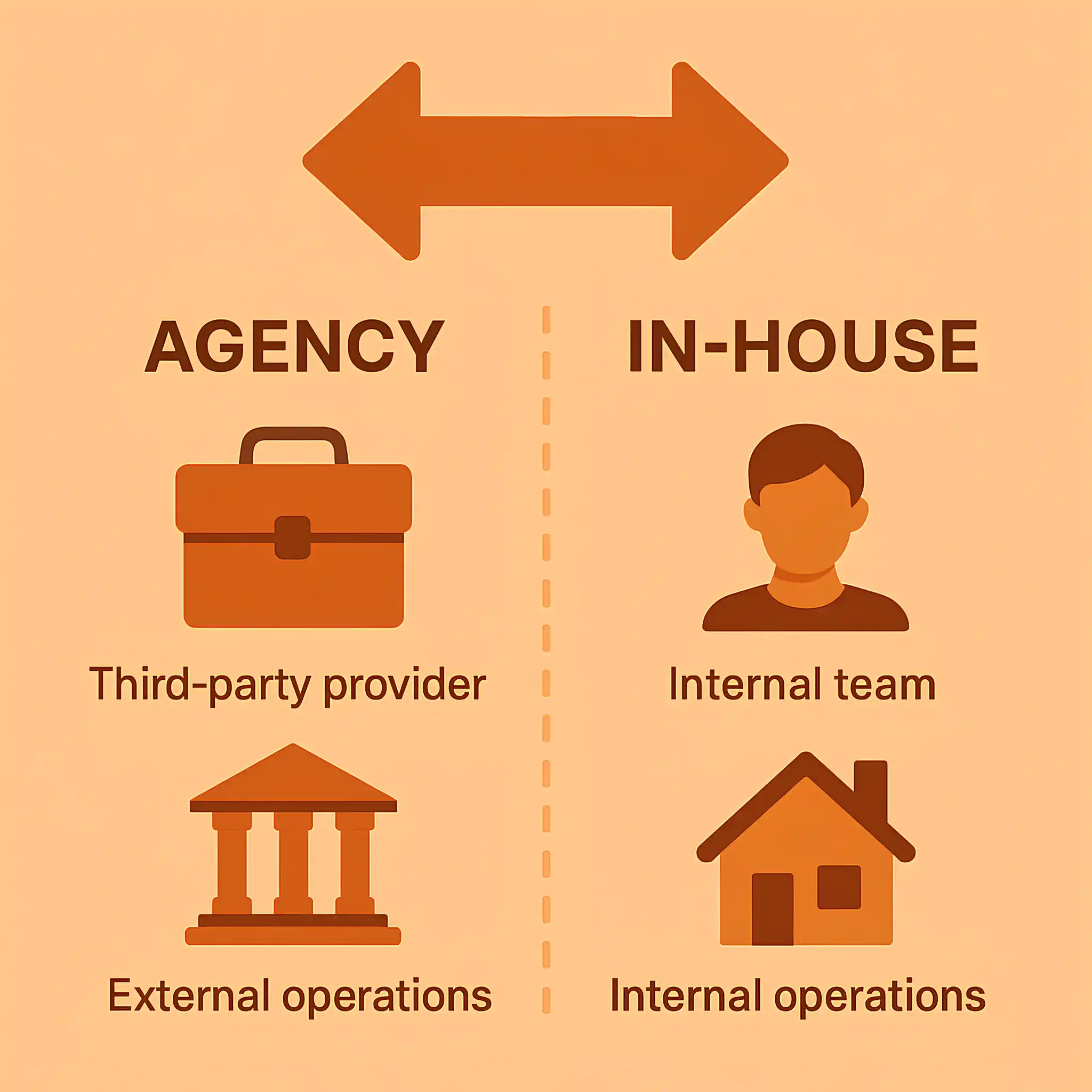
However, finding the right talent and keeping them is extremely difficult. You don’t just need one SEO consultant; you need a strategist, a content lead, a technical SEO, a link-building specialist, and sometimes even an analyst.
By the time you’ve staffed that, you’ve already spent what an agency SEO retainer would cost, and you’re still missing the breadth of experience.
On the other hand, agencies like mine bring scale and perspective. We’ve handled multiple enterprise SaaS setups across different industries and tech stacks, so we don’t just bring theory; we bring patterns.
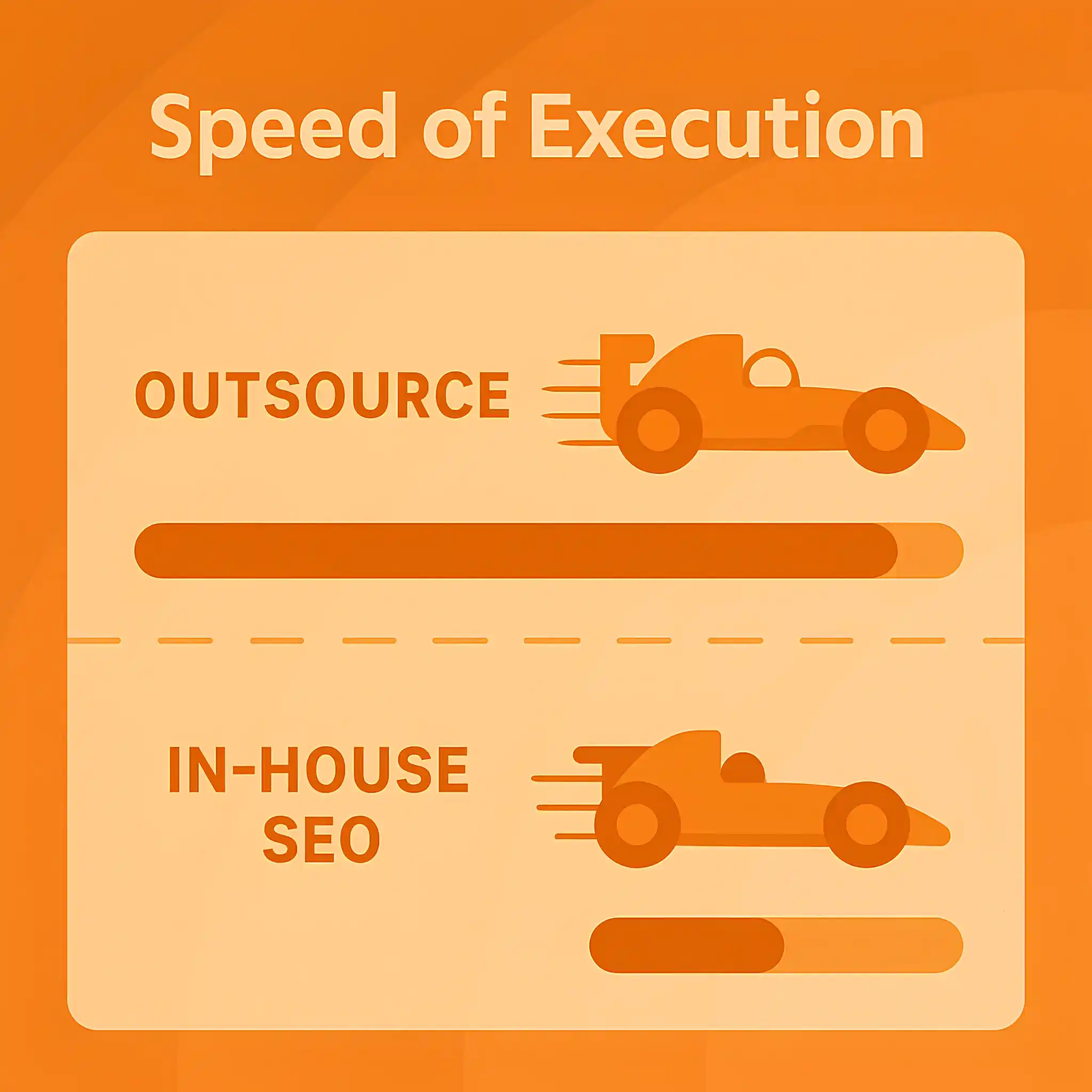
Agencies also come with tools and systems already in place: log analysis pipelines, link acquisition frameworks, and editorial workflows. If a SaaS company tried to build those from scratch in-house, it would take a year.
So, in my opinion, in-house is better when the SaaS company already has strong leadership buy-in for SEO, a stable product, and the resources to staff a team.
Where agencies win is during transitions: major SEO migrations, international rollouts, enterprise link-building campaigns; when speed, depth, and specialized skills matter more than day-to-day presence.
In short, if you’re early in enterprise SEO maturity, hire an SEO agency. If you’re later, with budgets and buy-in, build in-house, but don’t be afraid to bring in an agency partner for the complex, high-risk projects.
By the way, if you’re curious about what it looks like to outsource SEO without wasting months and budget, I’ve written a guide that breaks down the whole process step by step.
The Cost of Enterprise SaaS SEO
Let me start with the direct answer. In most cases, enterprise SaaS SEO costs anywhere from $5,000 to $25,000+ per month, depending on the scope, the size of the website, and the competitiveness of the market. That’s a wide range, I know, but enterprise SEO isn’t a one-size-fits-all service.
The cost depends on several factors, but the main ones I’ve seen over and over again are the scale of the site, backlinks, target market, and internal resources.
If you want a deeper breakdown with examples and pricing models, check out my full Enterprise SEO Cost Guide, where I go into the numbers in detail
Partner with a Top-Rated Enterprise SaaS SEO Agency
Over the past years, we’ve had the chance to work side by side with SaaS companies that started as small B2B players and grew into full enterprise operations.
From complex migrations to multi-market rollouts, we’ve carried strategies through every stage and seen them succeed in real numbers; more traffic, stronger pipelines, and revenue growth that kept growing.
Those experiences taught us what works at scale, and now we’re ready to repeat that success for you.
At our agency, enterprise SaaS SEO isn’t an experiment; it’s what we do daily. We’re equipped with the frameworks, tools, and playbooks that handle scale without losing accuracy.
Whether it’s B2B SaaS SEO at the architecture level, international expansion, or enterprise link building, our team knows how to turn those challenges into opportunities.
If you’re serious about building authority in competitive markets and want a partner who’s already done it before, we’re here to help you make it happen.
Can SEO Target Enterprise Buyer Personas?
Yes, if the research is done right, SEO can absolutely target enterprise buyer personas. Enterprise buyers search with intent, and they use specific language tied to their role, their industry, and the problems they need solved. If your content reflects that, you can reach them.
You need to understand what decision-makers are typing into search engines; CIOs might look for security compliance terms, while marketing directors might search for integrations with their existing stack.

Then, you can build content that speaks directly to those pain points: detailed comparison pages, industry use cases, feature breakdowns, and integration hubs. When that content is optimized and supported with authority links, it starts ranking for the exact queries enterprise buyers are asking.
From my experience, nothing stops SEO from working at this level; it just takes patience and accuracy.
If you’re unsure where you stand, we can also conduct a full SaaS content audit to see how well you’re targeting enterprise personas today, and what opportunities we can unlock to make sure your site speaks to the right audience.
How Do We Scale SEO Across Multiple SAAS Products?
Each product usually has its own features, audience, and funnel, but Google still sees them under one brand. The trick is to balance separation with shared authority.
From my experience, the first step is setting a clear information architecture. You can’t just put every product into the same bucket and hope Google figures it out.Each product needs its own vertical: dedicated feature pages, industry use cases, and support docs. That way, search engines (and users) can easily understand what belongs to which product.
At the same time, you should make sure there’s cross-linking between products where it makes sense; many enterprise buyers want to see how solutions work together, and internal linking also strengthens your overall domain authority.
How Does SEO Fit Into a PLG Model?
In a product-led growth (PLG) model, the product itself drives adoption, but SEO is what brings the right users to the front door. This plays out with SaaS companies where free trials or freemium tiers are the main entry point.
The role of SEO here isn’t just “brand awareness,” it’s to connect high-intent searches directly to the product experience.
That means your SEO strategy has to be mapped to the product journey. Instead of generating broad blog traffic, you focus on queries tied to the exact problems your product solves
The challenge is discipline. Many SaaS companies get lost in considering volume while forgetting that PLG only works when traffic turns into activation.
Centralized vs. Regional SEO Teams: What Works Better?
In my opinion, each comes with its own headaches. A centralized SEO team keeps everything consistent: same playbooks, same reporting, same workflows. Of course, that’s important, too.
But the downside is speed and nuance. Regional teams understand the local search landscape better than anyone. They know the keywords people use in Germany versus Japan, they catch cultural nuances in content, and they can adapt campaigns faster. The problem is, when every region does its own thing without central alignment, you often result in fragmented strategies, conflicting goals, and sometimes even competing pages in the SERPs.
The sweet spot is usually a hybrid. Keep a strong centralized SEO team that owns the technical foundation, site architecture, and global playbooks. Then, give regional marketers room to adapt content, keyword targeting, and link acquisition for their markets.






